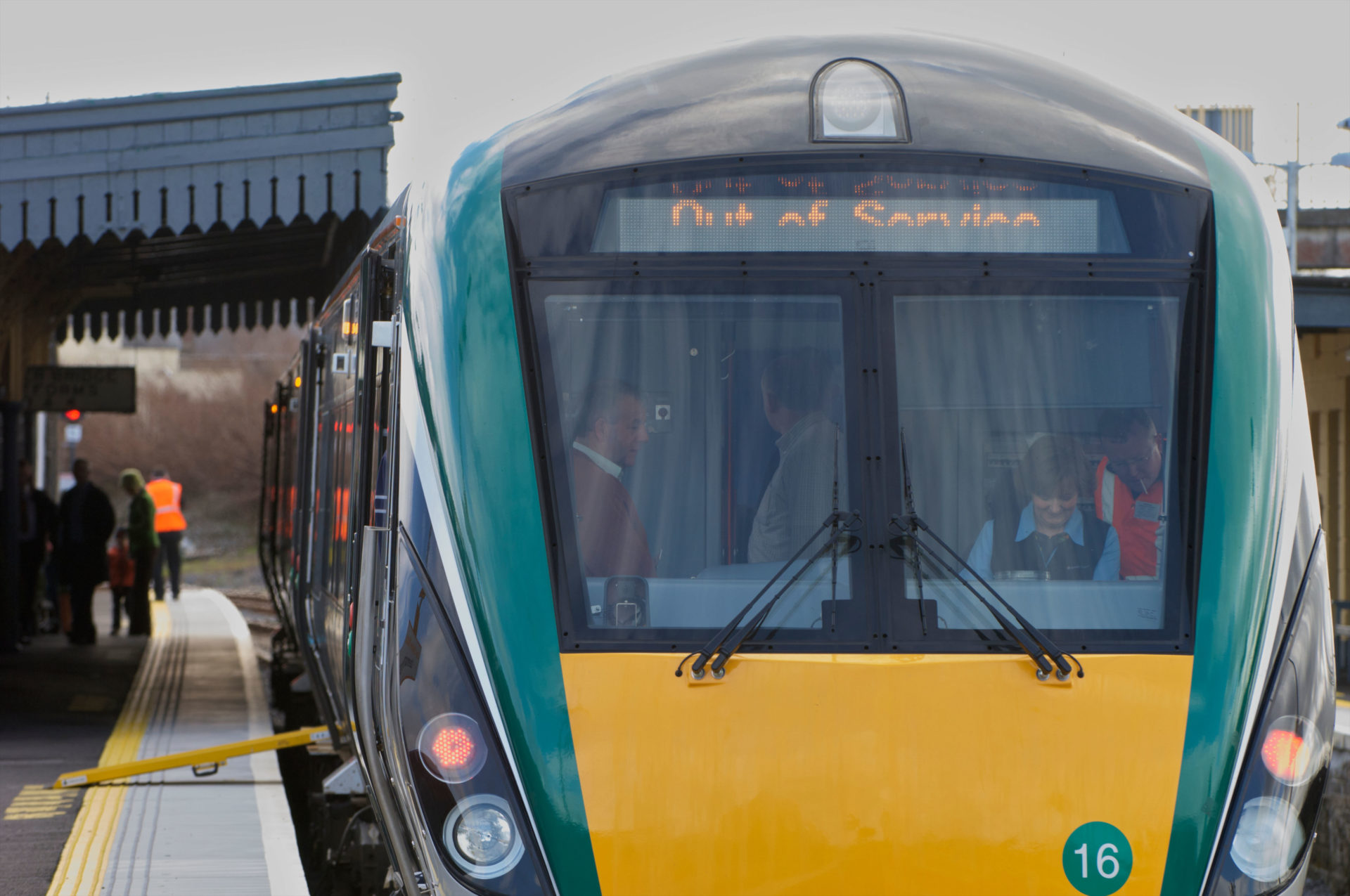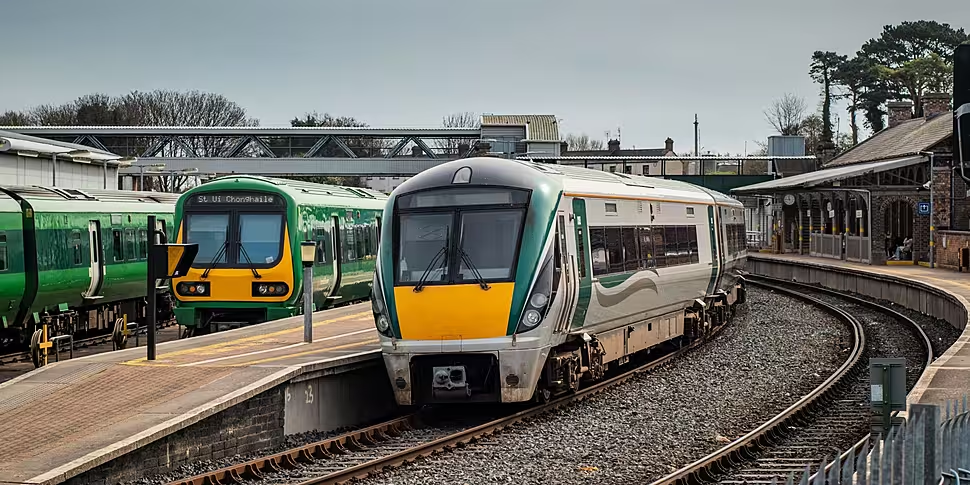Irish Rail says it is facing a ‘significant challenge’ as it aims to cut emissions in half while increasing the number of train journeys people take.
In its 2021 Climate Action Plan, Transport Minister Eamon Ryan said the Government would aim to reduce emissions from transport by half by the year 2030.
In line with those targets, Irish Rail will today launch its own Climate Action Plan and commit itself to a 51% reduction in emissions - as it also aims to boost rail journeys.
“We intend to have more intercity, more DART services, more commuter services to allow more people to move to public transport,” Irish Rail Spokesperson Barry Kenny told Newstalk Breakfast.
“So, one of the key parts of this is our existing investment programme which will see the electrification of the network expand.”
In 2021, there were only 50km of electrified railway lines in Ireland and by 2030 the Government target is to increase that to 150km.
 An Irish Rail train standing at the platform at Claremorris station in Co Mayo. 02/02/2013. Image: Keith Heneghan / Alamy Stock Photo
An Irish Rail train standing at the platform at Claremorris station in Co Mayo. 02/02/2013. Image: Keith Heneghan / Alamy Stock PhotoIn addition, by the end of the decade, all replacement rail vehicles will be low carbon.
“We will still have - particularly on our intercity network - a relatively young diesel fleet,” Mr Kenny said.
“So, what we’re going to have to do there is reduce our reliance on diesel by incorporating biofuels but also hybrid technology on those trains - and alternative fuel for things like locomotives and our track maintenance machinery.
“If you take our overall emissions right now, 82% of those are down to the use of diesel on our network, so that’s why it’s such a critical element for us.”
The company also hopes to reduce reliance on fossil fuels by generating renewable power itself through the use of solar power.
“Already on our new National Train Control Centre, the roof of it is simply carpeted with solar panels,” Mr Kenny said.
“We’ll be looking at our major sites and buildings in Inchicore and our fleet maintenance in Portlaoise and Drogheda to install roof panels there.”
Energy efficiency
Many Irish Rail buildings date back to the 19th century and Mr Kenny said retrofitting them is a “significant challenge” but one they are “absolutely committed” to.
“You have to protect the heritage aspect of buildings but get buildings which tend to be kind of Es and Fs in terms of BER [ratings] and getting them to those B ratings,” he said.
“We’ll also be, in terms of other fleets, upgrading engines to improve those efficiencies also.”
Ireland is committed to reaching net zero carbon emissions by the year 2050.
Main image: Trains at Drogheda. Picture by: Alamy.com









